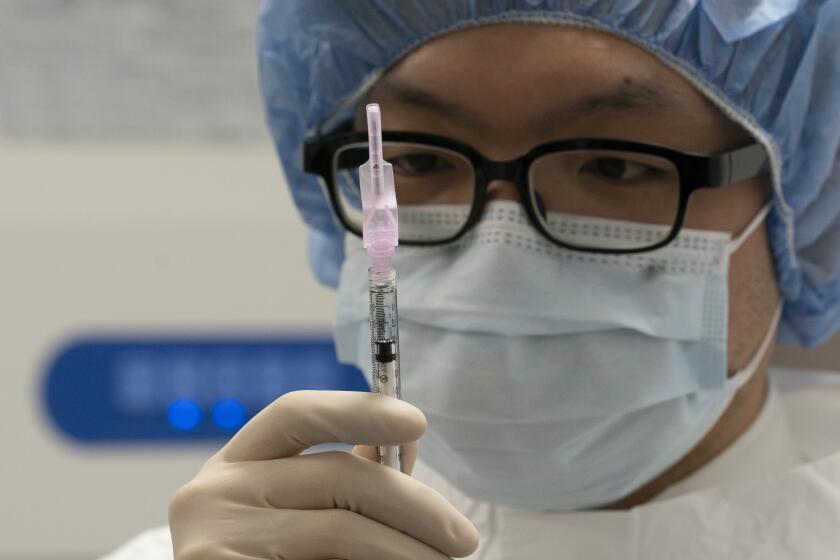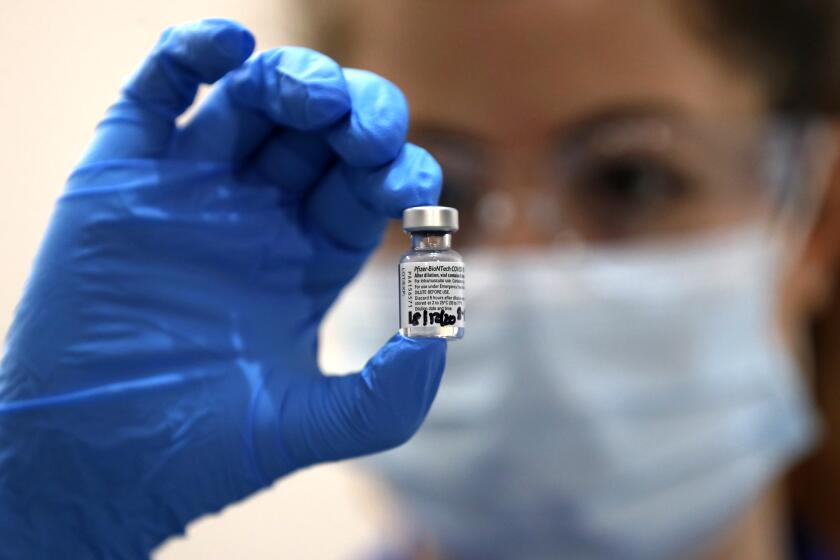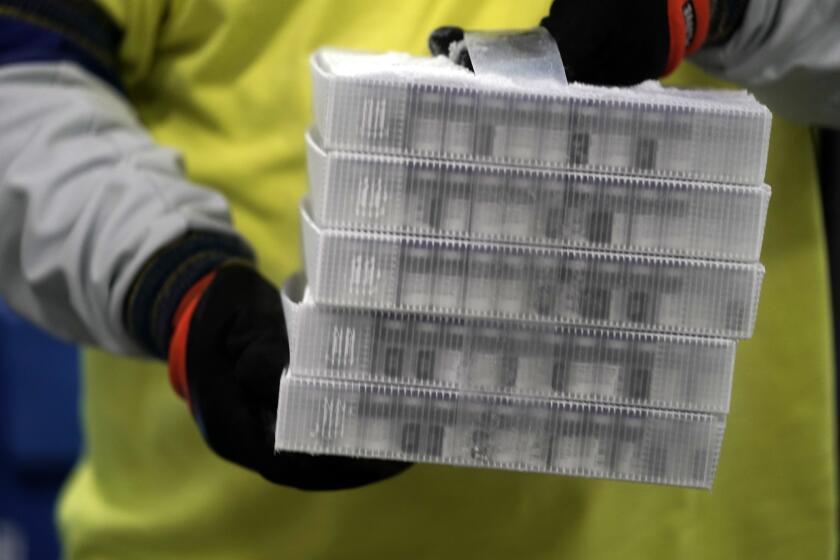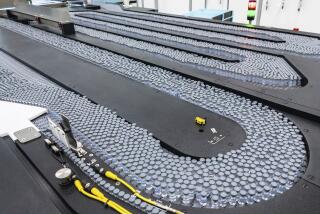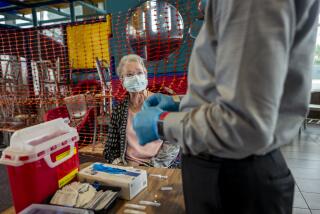Who will be at the front of the line for vaccines in California? Hereâs what we know
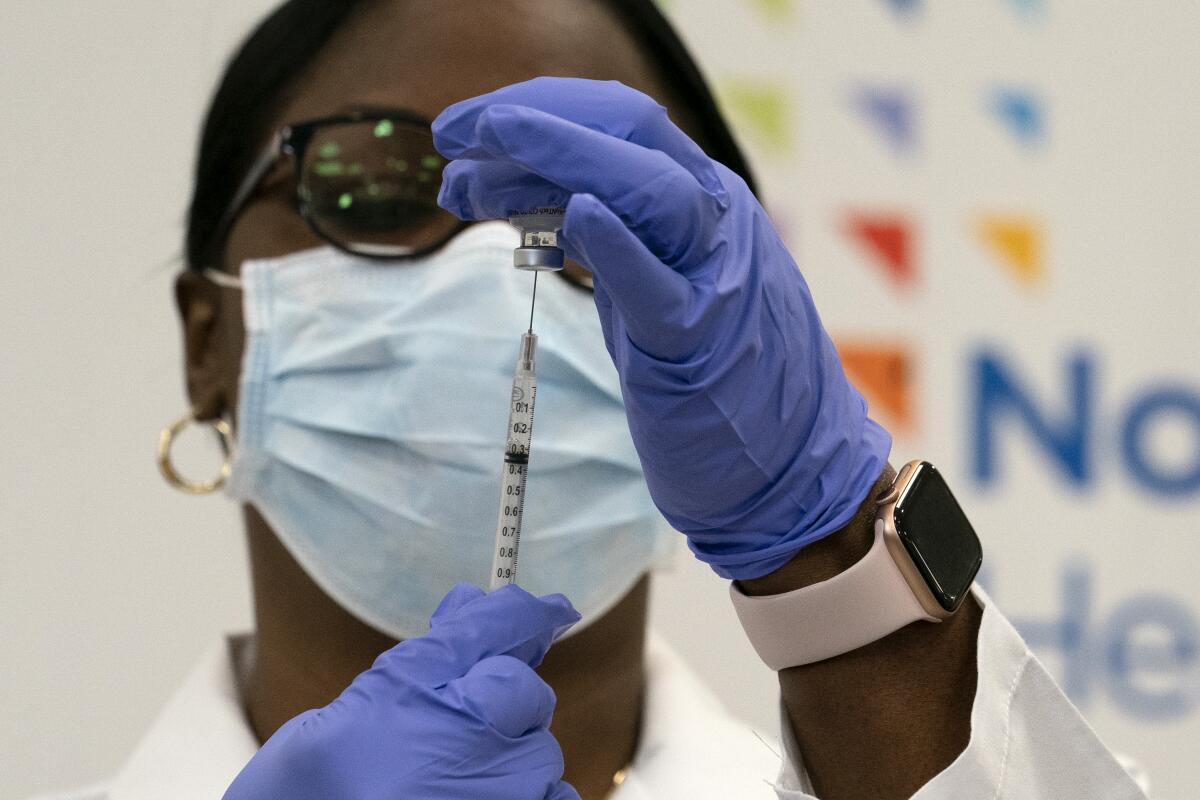
The COVID-19 vaccine developed by Pfizer and BioNTech is now in California and could be distributed within hours.
But who will get the first doses?
Here is what we know:
Hereâs a timeline of when the general public can expect to begin receiving the COVID-19 vaccine.
The timing
- Some doses of the vaccine arrived at Los Angeles International Airport on Sunday night.
- Vaccinations could be administered as early as Monday to some healthcare providers, but there has been no official word yet on who will get the first dose. More vaccines are on the way.
A scientific review team representing California, Oregon, Washington and Nevada has endorsed the safety of the COVID-19 vaccine developed by Pfizer and BioNTech.
The hospitals
- Medical workers were expected to get the first doses of the vaccine through a limited number of hospitals in California that include Cedars-Sinai Medical Center and UCLA Health in Los Angeles and Rady Childrenâs Hospital in San Diego. In Northern California, designated hospitals include UC San Francisco Medical Center, Mercy Medical Center in Redding and UC Davis Health in Sacramento.
- The state Department of Public Health selected at least seven hospitals to receive the first batch of vaccines based on their storage capacity, the relatively high risk of their healthcare populations and their ability to distribute the vaccine in the community once it becomes widely available. The hospitals also must be able to store the vaccines at the required extremely low temperatures: minus 70 degrees Celsius (about minus 95 degrees Fahrenheit).
The first coronavirus vaccinations came on a day when the U.S. death toll climbed past 300,000 â nearly 11 months after the nationâs first case was diagnosed.
The line
- Health officials have said the first batch of doses will go to frontline healthcare workers with direct exposure to the coronavirus as well as residents of long-term care facilities, followed by other at-risk groups.
- Others who will be prioritized include first responders, people who are working at coronavirus testing sites or administering vaccines, students in clinical rotations in high-risk areas such as the emergency department and researchers actively working with COVID-19 patients or vaccines.
- Covering all healthcare workers will take time. California has an estimated 2.4 million healthcare workers, and the stateâs first shipment of vaccine from Pfizer will contain about 327,000 doses.
- Most hospitals have not revealed their plans for rolling out the vaccine. UC San Francisco Health expects to receive at least 975 doses Monday or Tuesday, followed by more shipments later in the week. The initial shipment wonât be enough to cover the 20,000 or so people affiliated with the healthcare system who need to be vaccinated.
- UC Davis Health formed a working group that has spent several weeks developing a tiered approach to vaccinating employees based on the risk of infection with the type of work they perform, the healthcare system said. In the emergency department, top-tier job classifications include custodial workers, physicians, nurses, first responders and clerks. The health system says itâs prepared to inoculate up to 400 employees each day.
- UC San Diego expects to receive 2,900 of those vaccines and begin distribution to frontline health workers, said Dr. David Brenner, the universityâs vice chancellor for health sciences. âPeople who are most at risk will get it first â people in the [Emergency Department], people in the ICUs, then it goes down to people doing procedures, then down to people doing consults and people in the laboratories,â Brenner said. Dr. Susan Little, who helped plan how UCSD will allocate its doses, says that vaccination will be voluntary.
Future doses
- Los Angeles County health officials say they are planning a three-phase rollout. After the first phase â consisting of healthcare workers and institutional residents and staff â the second will focus on essential workers and the third on high-risk groups, including seniors and people with chronic health conditions. Officials are still working out the details of how people would be prioritized within the broad groupings. L.A. County has an estimated 240,000 workers at acute-care hospitals, as well as 30,000 emergency medical workers, 70,000 long-term care healthcare workers and staff, 34,000 residents at nursing homes and 64,000 residents at other long-term care facilities, according to the county Department of Public Health.
- A second vaccine, created by the pharmaceutical company Moderna in partnership with the National Institutes of Health, could be granted emergency use authorization next week. In total, California expects at least 2 million doses of COVID-19 vaccines by the end of December and approximately 6 million by the end of January, said Dr. Robert Schechter, a medical officer with the California Department of Public Health.
- California officials have not determined the order of vaccinations for other essential industries. Trade groups and labor unions are actively lobbying for earlier slots for their members working in law enforcement, agriculture, meatpacking, dentistry, child care, schooling and many other sectors.
- Itâs unlikely the general public will get access to the vaccine until spring or summer. The San Francisco Department of Health said that the general population will not have access to the shots âuntil the vaccine supply is no longer limited,â which is likely to occur in the summer or fall. Even with the vaccine, people will probably still have to practice physical distancing and wear masks.
Times staff writer Tracy Wilkinson contributed to this report.
More to Read
Sign up for Essential California
The most important California stories and recommendations in your inbox every morning.
You may occasionally receive promotional content from the Los Angeles Times.
